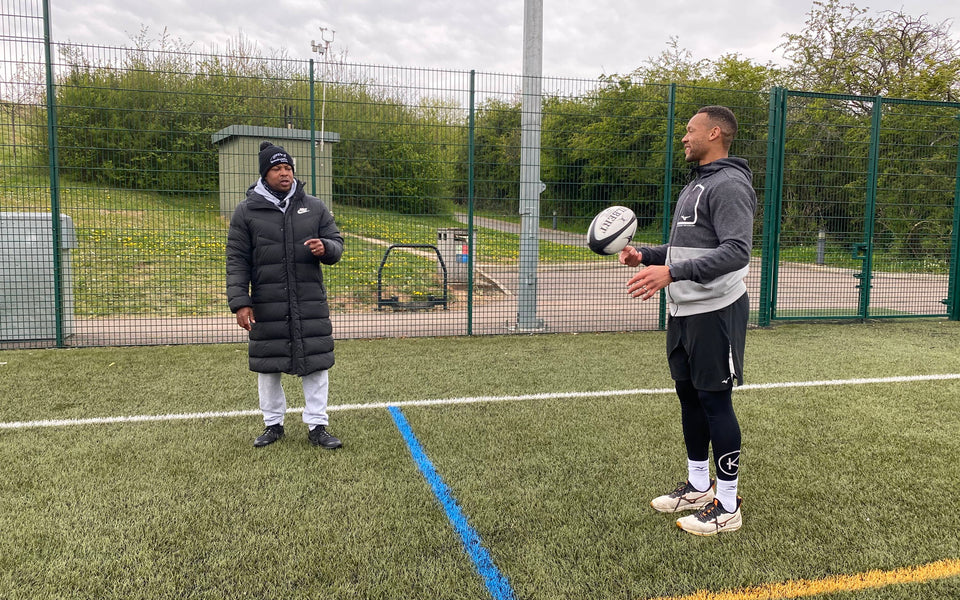KYMIRA® Men's IR50 Infrared Recovery Leggings
We've reached the critical juncture of the football and rugby seasons. The winter is biting, the fixture lists are congested, and the risk of injury to players is increased [1]. There's also the increasing importance of the fixtures - with fewer games remaining the impact of results is greater. A loss can be more damaging when there are fewer games remaining to play catch up.
There are also cup games where everything is on the line in a single fixture. That also presents a problem because we know from data that injury rates in extra competitive matches are significantly higher than in general fixtures. If we take data from football for example, injuries resulting in more than a week of lost playing time were more common in the Champions League matches (characterised by knockout competition, high level of intensity, highest standard of play) than in general league matches [2].
It's therefore safe to assume that as importance, intensity and frequency of fixtures increase, the injury risks are higher.
Time to read: 5 minutes
Intermediate
Key Points:
- Considerations for improved squad management
- Accumulated fatigue & player performance
- Practical tips for maintaining player performance
- Efficiency of simple strategies
Simple strategies such as improving recovery strategy, introducing infrared fabrics for training and performance kit, you can make a significant difference to the maintenance of performance levels throughout the season.
Managing playing squads to maintain performance
Squad management is a tricky task to manage for S&C and medical departments. As injuries occur, it place additional demands on the fit players – they're required to play for longer, and they're also expected to play more frequently.
In Rugby, data shows that on average at any given time 18% of the playing squad will be unavailable through injury. This means that 82% of the squad will have to carry 100% of the fixture burden. With a huge amount of sport still to be played, this can result in players being rushed back from injury too early which is a massive problem.
In Rugby Union, data collected from 546 players across 12 different premiership clubs showed that the average time out with an injury is 18 days. Where things get interesting (and challenging for medical departments), is that recurrences accounted for 18% of the injuries in the squad and they were typically more severe (average of 27 days out) compared to new injuries (average of 16 days out) [3].
Rushing players back quickly actually has the effect of increasing the amount of time they spend on the side lines, which is a lesson to learn for medical departments in sport.
Accumulated fatigue and player performance
As seasons progress and accumulated fatigue begins to build, player performance can be impacted. The issue is that there's no hard and fast rules around how individuals experience fatigue, so you can't model for it accurately. Instead, a more appropriate way to measure and manage fatigue is with individual testing and assessment of fatigue markers [4].
In-game testing is even harder, but it's obvious that throughout the duration of a match players fatigue and performance will decline. This is position-dependent, because in sports such as football and rugby the positional demands change significantly which will have an impact on injury severity and frequency.
Maintaining performance throughout the season – Practical tips
Having established a link between fixture congestion, fatigue and injury risk, what steps can we take to mitigate performance reductions in the tail end of a season?
Monitor players
Further to the earlier point, players aren't robots and energy levels peak and trough at different rates. There's also going to be positional discrepancies for workload and recovery. A goalkeeper for example will likely not suffer anywhere near the fatigue a full back would. Regular monitoring of recovery markers will help to make sure players are given the most personalised (and effective) programmes possible to ensure they're ready for game day.
Enhance recovery
The first step is to enhance recovery. With compressed recovery windows available to players, training load must be reduced and more emphasis placed on maximising recovery between fixtures. One of the most effective ways to do that is with infrared clothing. The research supporting the reduction in delayed onset muscle soreness in football players is strong [5].
Improve warm up
Moving a warmup from simply ‘getting the body warm' to instead taking steps to mitigate injury risk and improve performance is a major step to performance improvement. With KYMIRA® products the infrared technology increases the production of Nitric Oxide, a powerful vasodilator. That means wearing KYMIRA® clothing during warm up and/or performance will help to improve tissue elasticity and oxygen delivery during exercise, reducing injury risk and improving performance [6].
Improve sleep efficiency
The bedrock of solid recovery is good quality sleep. By maximising sleep efficiency there's a downstream effect on the depth of recovery. Research shows that the introduction of infrared fabrics at bedtime enhances sleep efficiency [7]. A simple intervention that takes no effort, no additional work and no rules (you simply wear it), would have a significant impact on team performance, especially in the tail end of the season.
Maintaining performance until the final game – conclusion
In elite sport the finest margins are important. The difference between success and failure can be down to the smallest intervention, and ensuring performance is maintained throughout the competitive year.
With the introduction of simple strategies such as player monitoring, improving recovery strategy, introducing infrared fabrics for training and performance kit, you can make a significant difference to the maintenance of performance levels throughout the season.
To shop the KYMIRA range, click here.
References
[2] https://journals.sagepub.com/doi/abs/10.1177/0363546513486769?journalCode=ajsb
[3] https://bjsm.bmj.com/content/39/10/757
[4] https://www.tandfonline.com/doi/full/10.1080/21641846.2017.1377811
[5] https://www.ncbi.nlm.nih.gov/pmc/articles/PMC4993144/
[6] https://bmcmedicine.biomedcentral.com/articles/10.1186/1741-7015-10-75
[7] https://celliant.com/wp-content/uploads/2020/09/Double-Blind_web.pdf
